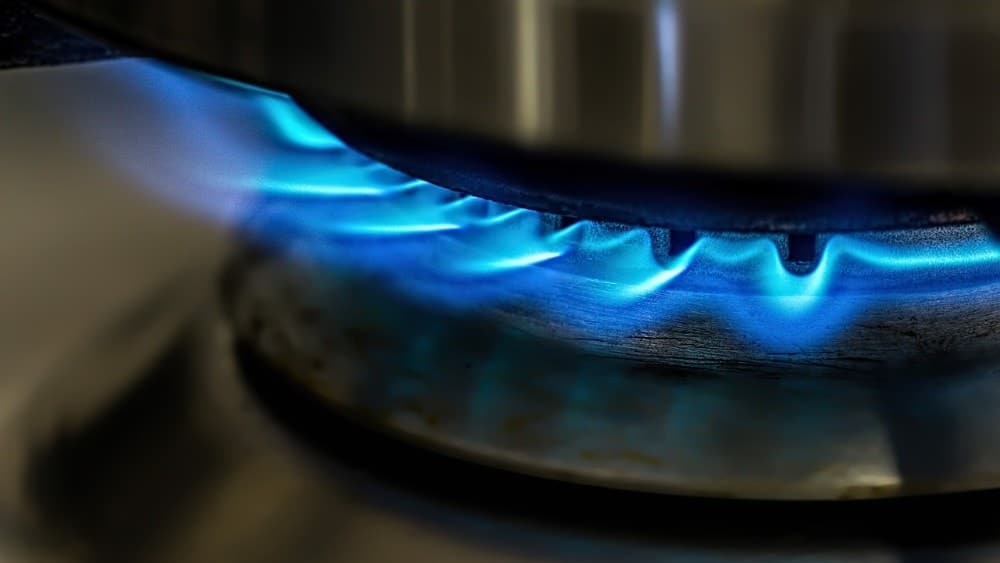There’s something magical about brewing tea that goes beyond just a warm cup in your hands. It’s a world of unique flavors waiting to be explored, and I can’t help but get excited about the endless possibilities. From floral notes to earthy undertones, each type of tea offers a distinct experience that can elevate any beverage.
Overview of Brewing with Tea
Brewing with tea opens up a world of flavors and aromas that can elevate any drink. I love exploring the unique characteristics that various teas bring to my brews. From the delicate floral notes of oolong to the robust earthiness of puerh, each type of tea offers endless possibilities.
When I brew with tea, I pay close attention to the steeping time and temperature. These factors significantly impact the final flavor profile. For example, green tea requires lower temperatures to preserve its fresh taste, while black tea can handle hotter water for a bolder flavor. Experimenting with different combinations keeps my passion for brewing alive.
I often blend teas with other ingredients, like herbs or spices, to craft exciting profiles. Chamomile tea can mellow the bitterness of an IPA, while chai can add warmth and complexity to a porter. These combinations create adventurous brews that surprise the palate.

In addition to traditional teas, I also explore herbal infusions. Ingredients like hibiscus or mint can add a refreshing twist to a beverage. Herbal teas provide unique flavors and can be caffeine-free, making them perfect for any time of the day.
Whether I’m brewing a beer or creating a tea-infused cocktail, I find inspiration in the diverse world of tea. Every cup of tea brewed holds the potential for creativity in my brewing journey.
Popular Types of Tea for Brewing
Exploring various types of tea adds depth to the brewing experience. Each type presents unique flavors and characteristics worth trying.
Green Tea
Green tea boasts a delicate flavor profile with grassy and vegetal notes. It thrives in lower brewing temperatures, around 160°F to 180°F (71°C to 82°C), which preserves its fresh taste. I recommend steeping for 2 to 3 minutes to avoid bitterness. Popular varieties like Sencha and Matcha bring their unique charm to the table, often leading to a rich umami experience. Pairing green tea with citrus or mint creates refreshing blends suitable for any occasion.
Black Tea
Black tea delivers robust flavors and a bold profile, perfect for those who appreciate strength in their brews. Brewing at 200°F to 212°F (93°C to 100°C) for 3 to 5 minutes brings out its full-bodied character. Varieties such as Assam and Darjeeling each possess distinctive flavor notes, ranging from malty to floral. Adding milk or spices, like chai, transforms black tea into a comforting drink, perfect for cold days or stimulating conversations.
Herbal Tea
Herbal tea offers a caffeine-free alternative with countless flavor possibilities. With steeping water at nearly boiling, around 200°F (93°C), herbal infusions like chamomile and peppermint shine through in 5 to 7 minutes. The natural ingredients bring vibrant flavors, making them excellent for relaxation or digestion. Combining herbs with fruits or spices further enriches the experience, allowing for creativity in crafting unique, flavorful blends.
Techniques for Brewing Tea
Brewing tea is an art that requires attention to detail. It involves understanding the perfect temperature and timing to extract the best flavors from your chosen leaves.
Temperature and Timing
Temperature and timing play crucial roles in crafting the perfect cup of tea. For green tea, I steep it at 160°F to 180°F for 2 to 3 minutes. This gentle treatment preserves its delicate, grassy flavors. For black tea, I raise the temperature to 200°F to 212°F and steep for 3 to 5 minutes. This higher temperature extracts its robust notes. When it comes to herbal infusions, I use nearly boiling water at 200°F, steeping for 5 to 7 minutes to bring out its vibrant and aromatic qualities. Each type benefits from precise attention to these elements, ensuring an enjoyable blend of flavors.
Tools and Equipment
Using the right tools makes a difference in brewing tea. I rely on a few essentials:
- Teapot: A traditional teapot retains heat well, allowing for optimal steeping.
- Tea Infuser: I use infusers or sachets for loose leaf tea, preventing loose leaves from floating freely.
- Kettle: A kettle with temperature control ensures I reach the right heat easily.
- Thermometer: Keeping a thermometer on hand helps me monitor water temperature accurately.
Investing in quality tools enhances my brewing experience and consistently results in delicious cups of tea.
Flavor Profiles of Tea
Exploring the flavor profiles of tea reveals a rich tapestry of tastes, each contributing to the unique experience of brewing. From floral notes to earthy tones and spicy undertones, every sip unlocks new nuances.
Floral Notes
Floral notes add a beautiful fragrance and subtle sweetness to tea. I often enjoy varieties like jasmine green tea, which offers an enchanting aroma coupled with a gentle, refreshing taste. Another favorite is chamomile, known for its calming properties and hints of apple-like sweetness. These floral infusions often require lower steeping temperatures, around 180°F to 190°F, for about 3 to 5 minutes, allowing their delicate profiles to blossom fully.
Earthy Tones
Earthy tones present a grounded, rustic flavor that can be incredibly satisfying. I’m particularly fond of pu-erh tea, with its deep, rich notes and a smooth finish. This fermented tea benefits from boiling water (around 212°F) and can steep for 4 to 7 minutes, drawing out those earthy depths. Another great option is rooibos, which carries a naturally sweet, nutty taste that offers a caffeine-free alternative while still delivering robust flavor.
Spicy Undertones
Spicy undertones add intrigue and complexity to tea blends. I often experiment with chai, combining black tea with a medley of spices like cardamom, cinnamon, and ginger. This blend steeps well at 200°F for 5 to 7 minutes, producing a warming beverage that packs a flavorful punch. Additionally, adding a pinch of pepper or cloves can elevate the taste further, making each cup a delightful journey for the palate.
Creative Recipes Using Brewed Tea
Brewing with tea opens up exciting avenues for crafting unique beverages. Whether you’re showcasing tea cocktails or diving into tea-infused desserts, these recipes highlight creative uses of brewed tea.
Tea Cocktails
Tea cocktails blend the complex flavors of tea with traditional spirits, creating refreshing and innovative drinks. Here are a few standout recipes you can try:
- Jasmine Green Tea Mojito: Combine 2 ounces of brewed jasmine green tea with 1 ounce of white rum, 1 ounce of lime juice, and 1 ounce of simple syrup. Muddle fresh mint leaves in a glass, add the mixture, stir well, and top with club soda for a bright and herbaceous cocktail.
- Chai Spiced Old Fashioned: Steep 1 cup of spiced chai tea, allowing it to cool. In a glass, combine 2 ounces of bourbon with 1 ounce of cooled chai tea and a dash of bitters. Stir with ice and garnish with an orange twist for a warm, aromatic twist on a classic old fashioned.
- Matcha Margarita: Whisk together 1 teaspoon of matcha powder with 2 ounces of tequila, 1 ounce of lime juice, and 1 ounce of agave nectar. Shake with ice, strain into a glass, and enjoy a vibrant, earthy beverage that energizes.
Tea-infused Desserts
Using brewed tea in desserts adds depth and complexity to flavor profiles. Consider these delicious recipes:
- Earl Grey Ice Cream: Steep 2 cups of heavy cream with 2 tablespoons of Earl Grey tea leaves for 30 minutes. Strain the mixture, then combine with 1 cup of sweetened condensed milk. Freeze until solid for a luxurious and fragrant ice cream.
- Hibiscus Lemon Bars: Brew 1 cup of strong hibiscus tea and mix with 1 cup of sugar, 1/2 cup of lemon juice, and 4 eggs. Pour into a pre-baked graham cracker crust and bake until set. Chill, cut into squares, and enjoy the tartness paired with floral notes.
- Mint Tea Muffins: Brew 1 cup of fresh mint tea and let it cool. Mix 1 cup of flour, 1/2 cup of sugar, 1 teaspoon of baking powder, and 1/2 cup of mint tea. Bake at 350°F for 20 minutes for fragrant muffins that offer a refreshing start to your day.
Conclusion
Brewing tea is truly a delightful adventure filled with endless possibilities. Each cup invites you to explore unique flavors and aromas that can elevate your daily routine. Whether you’re experimenting with different steeping techniques or blending in your favorite herbs and spices, there’s always something new to discover.
I love the creative aspect of brewing tea and how it allows me to express my taste preferences. From refreshing herbal infusions to robust black teas the world of tea is a canvas for flavor exploration. So grab your kettle and let your curiosity lead the way to your next favorite brew. Happy steeping!




